Divinity: Original Sin 2 has a mode that lets players design their own Dungeons & Dragons-esque adventure inside the role-playing game, and in case you were wondering what kind of dweeb would port their homebrew D&D game into Divinity 2, the answer is me. My experiment was instructive and, I think, says a lot about the limits of video games’ Game Master modes compared to the freedom of tabletop role-playing games.
Released last week, Divinity: Original Sin 2 is a fantasy role-playing game that has the player and a party comprising an elf, a human, a dwarf and a very dapper lizard pursue and defeat a bishop who has deemed all sorcerers criminals.
Despite the game’s compelling environmental puzzles and top-tier voice acting I encountered throughout, I struggled to find my flow with the game’ plot, unlike most critics. It seemed a little genero-fantasy for me.
That’s why, for people like me who enjoy Divinity 2‘s system but not its main storyline, a Game Master mode is a welcome addition, and even a main attraction. The mode, announced in August 2015, was originally a stretch goal after developer Larian Studios reached its $US2 million ($3 million) funding goal on Kickstarter.
It would let players replicate the role of a D&D game’s dungeon master — its lead storyteller, rules referee and narrative curator — in a “drag and drop tabletop.” It’s about as close as you can get to a fully-fledged, thorough and true-to-form tabletop role-playing game design simulator.
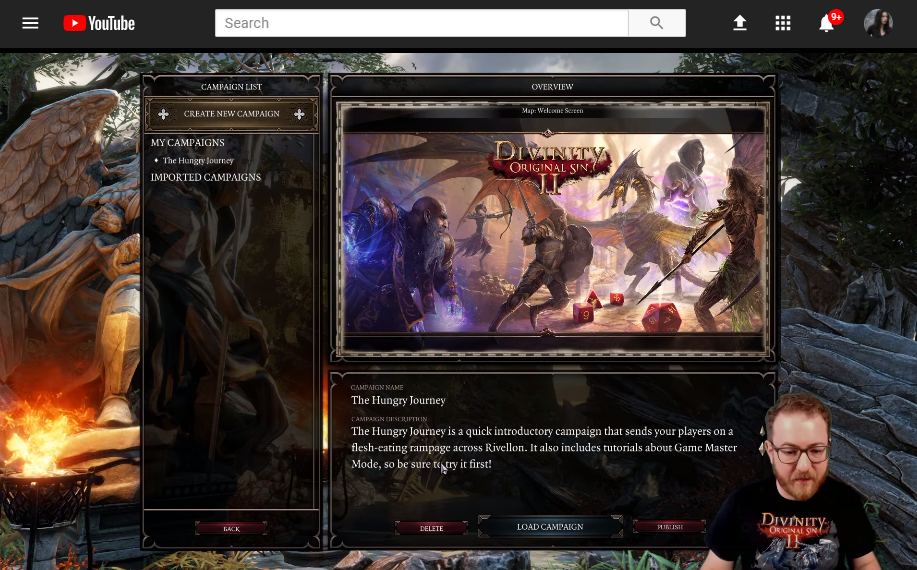
Divinity: Original Sin 2
As a D&D dungeon master myself, I found the prospect of having a visual template for my imagination exciting. Maybe drafting on an interactive graphic would actually help me better flesh out the adventure.
But I feared that the constraints of the video game format, like limited items or fixed appearances of skills, would limit my creative ambitions. To test it out, I replicated my homebrew D&D adventure, The Silence of Faen, in Divinity 2.
A brief synopsis: In The Silence of Faen, players meet on the made-up island of Faen in the Nelanther Islands. It’s famous for its mechanist’s guild, which produces wonders like metal knights, self-locking coffers, and masquerading sprays that the island, which has few natural resources, trades for foodstuffs in the mainland.
On a dock, players first encounter a grumpy fisherman named Nester who tells them that, on Faen, all magic users have lost the ability to use magic, thereby rendering Faen’s great trade assets obsolete.
After months with only fish to trade, the mainland ceased sending enough food to nourish all the islanders for lack of resources. The twist: A secret mafia housed in a smoking volcano is spreading magic-silencing powder across the land, and there, using an antidote to the powder, the villains are conjuring up food they can up-sell to islanders.
Replicating this inside Divinity 2 would require some specific knowledge about the Game Master mode’s capabilities and a lot of flexibility. To get acquainted, I tried out the tutorial. Divinity 2‘s Game Master mode’s tutorial plot is terrifying: The players are cannibals who are sent to an orphanage ripe with young, tasty children.
After loading the adventure, a map appeared and, on it, pins marked levels that I could load up and explore with players. A brief guide taught me how to use “stickies,” notes that only the Game Master can see, and “vignettes,” which everyone can see and help set the scene and give players exploration cues (here’s one from The Silence of Faen):
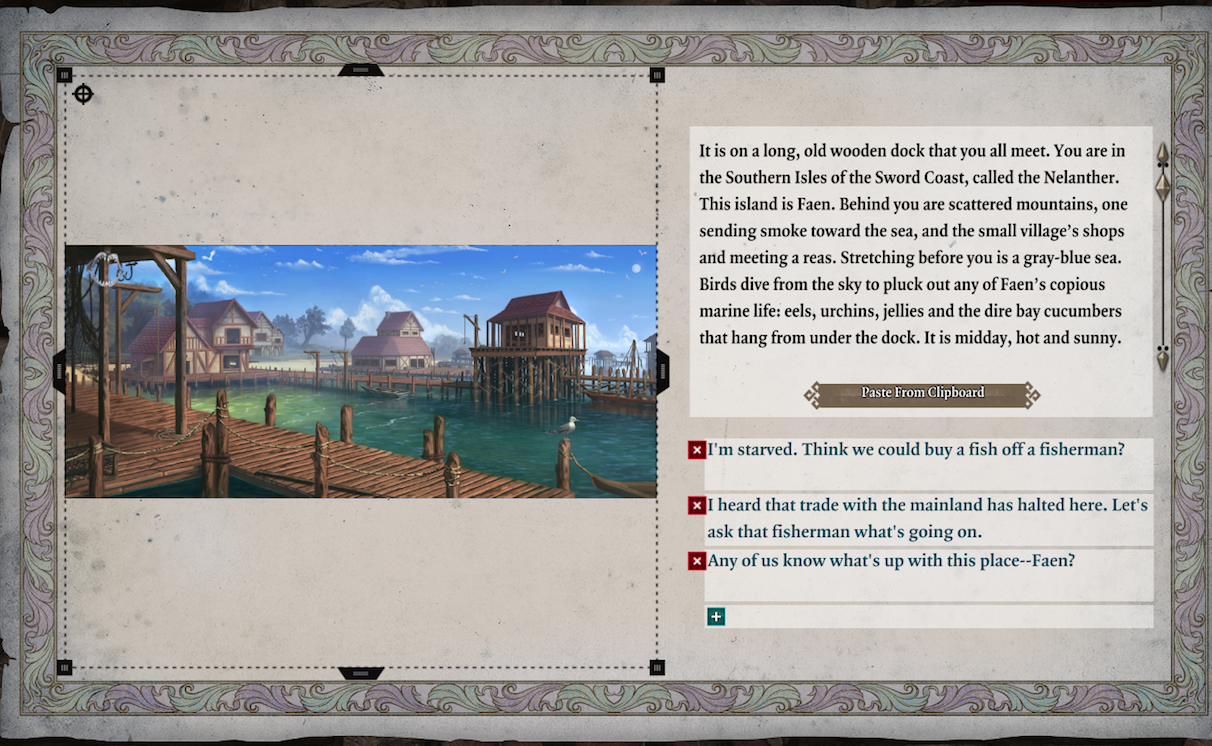
Running a few players through the tutorial adventure was extremely rocky, and that’s an understatement. Characters in the tutorial were pre-made, so I wasn’t totally clear on how to design my own or give them items or skills — one of several of the tutorial shortcomings.
Also, I had no idea what I could see versus what the players could see. Could they see the stickies? What about the vignettes? Most damning was that I didn’t know what my role as a Game Master actually entailed — was I supposed to read out loud (over Discord voice chat) what the pre-made stickies said about each character, just like D&D? How would players know what to do?
That was a bust. If you’re curious about how to use Divinity 2‘s Game Master mode, skip the tutorial and just watch a YouTube video.
Even after studying a few video tutorials, porting The Silence of Faen into DoS 2 wasn’t seamless, but it was a success. Co-author of Dungeon World Adam Koebel made the very apt observation that the mode is more of a “stage manager” mode than a “full on game master mode.”
The Game Master can string together customisable pre-made “levels” — like a dungeon citadel or a beach — to make an adventure. If players decide to go inside a building visible in a city level, for example, that would require bouncing to another pre-made level the Game Master already designed. (In most circumstances, it would be a lot of work to make every building available to enter.)
When it comes to creating characters, the Game Master can choose their class, race and appearance, as well as give them items, armour and skills. Then, during role-play or combat scenarios, the game master can possess that character (or any playable creature), moving them around and fighting for them.
Environmental objects, like candelabras, tables or treasure, can be selected, dragged and dropped on-screen from another list. I enjoyed touches like the numerous “status effects” and the “surface painter” that let me smear fire or acid all over the ground.
It felt like collaging a little, but the tools, once I figured them out, offered a lot of flexibility.
I chose an island level that looked a lot like The Silence of Faen‘s first scene at the dock. I made the fisherman Nester an NPC, along with two other fishermen NPCs for a little flavour. Because there were no docks or fishing rods in the item list, I forewent the dock and used one of the mode’s very many “fish stack” and “fish rack” options to indicate that these men were of the sea.
After tossing around a few shells, I wrote up some notes to myself about who Nester is and what information he could tell the players, as well as a longer note about the features of Faen. When players encountered Nester, I would act out conversations on his behalf, never fully reading verbatim through notes I’d written.
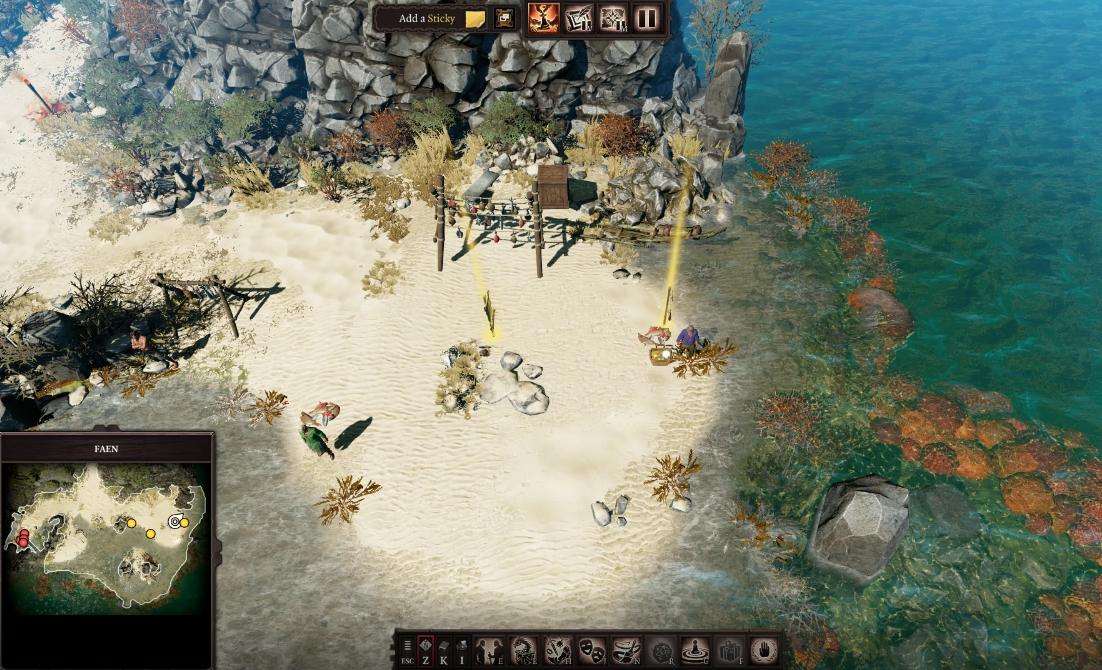
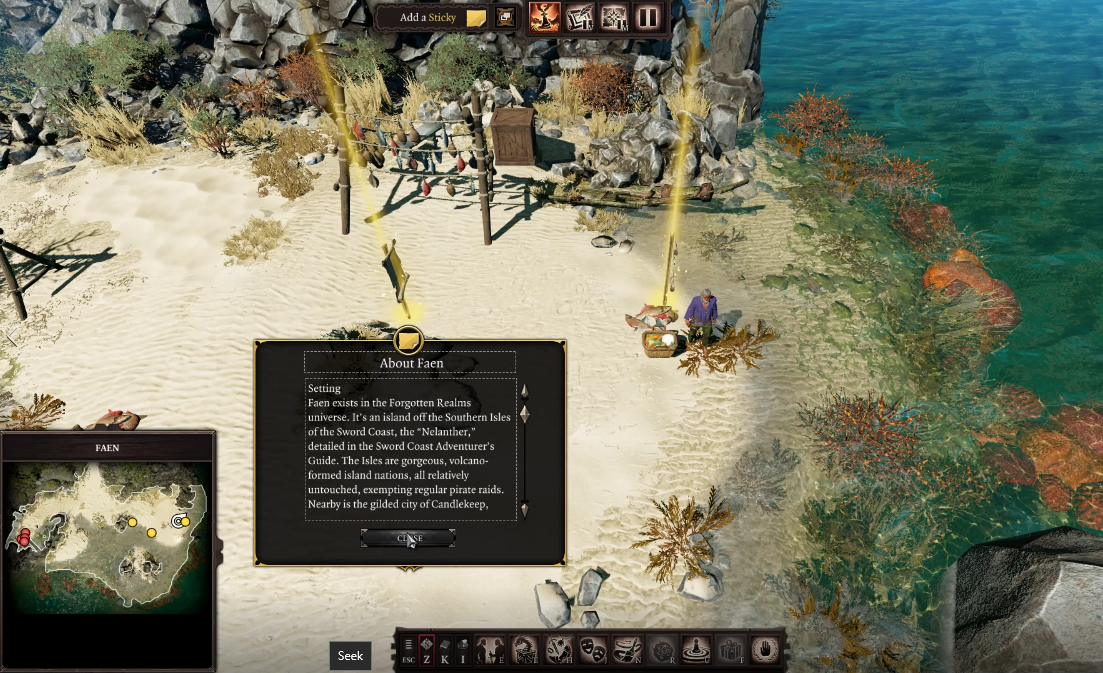
A vignette about Faen, featured above, provided some information about the town to players. Players could choose options like “I’m starved. Think we could buy a fish off a fisherman?” or “Any of us know what’s up with this place?” Nothing compelled the players to follow through on what they chose, but I hoped it would help get players thinking about how they wanted to interact with the level.
In the original D&D adventure, I did not think to design a battle encounter for players in the first scene. But here, it was very easy to see that there was a lot of space available for encounters compared to what I had previously imagined in my head.
To the left of Nester’s little enclave, I dropped a few small crabs plus a big, mean crab and set them to be “enemies” so they’d fight for their territory. Players could battle them if they wished — and a box of treasure on the other side of their hovel might compel them to.
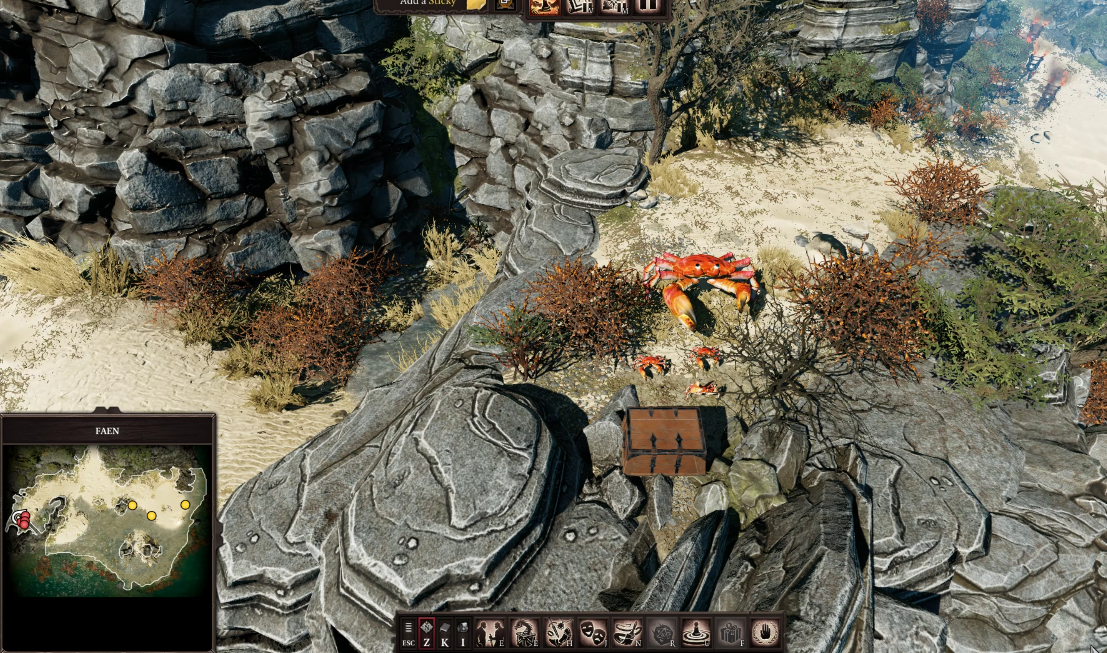
It would have been impossible for me to design the town of Faen to my specifications. No whirring magical items could run around in the mechanist’s guild; no great, towing metal structure would greet players at its entrance. It would have been too much effort to give everyone the effects of the magic-nullifying silencing powder.
Writing a few words down in a Dungeon Master’s notebook to describe the general look of townsfolk is easy; designing everyone to look a certain way in Divinity 2 is a lot of work. And finally, as any D&D dungeon master will tell you, it is very easy to improvise your generic potions shop in your generic D&D town and fill it with items and a rowdy shopkeeper; here, with the expectation that everything interactive is also visible, this type of geographic improvisation seemed off the table.
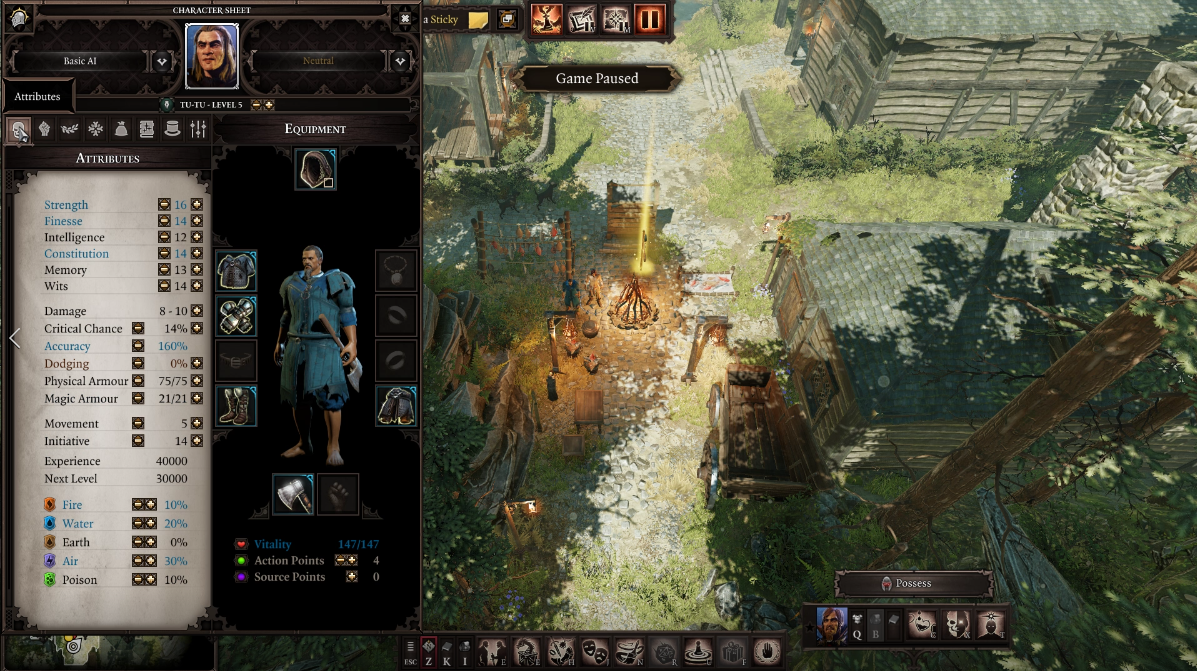
Thankfully, a lot of the rigidity of this mode — namely, in terms of role-playing — can be resolved by a few dice rolls. A “dice” feature lets me roll dice to see whether characters succeed at accomplishing a task, and because I can make rolls for specific characters, their relevant stats are immediately added to that roll.
Say a character wants to skin an animal they killed and wear it. I’d make them roll to see whether they adequately skinned and sewed together the animal and, if they did, give them new armour plus the relevant bonus. The only issue? It wouldn’t look as good as it does in anyone’s imagination.
For players who like micro-managing combat, Divinity 2‘s Game Master mode definitely delivers. You want to make an NPC a dodging champion with super high resistance to water and an extra five-meter range on grenade throws? Have at it! There’s a lot to go off here.
A lot of the issues I had with the game master mode are issues that would be integral to any video game attempting to replicate the freedom of play that tabletop role-playing games are famous for.
Divinity 2 does an excellent job approximating that and, frankly, if I was forced to run a role-playing game online, I’d first turn to Divinity 2 before any of the D&D apps that facilitate long-distance games.
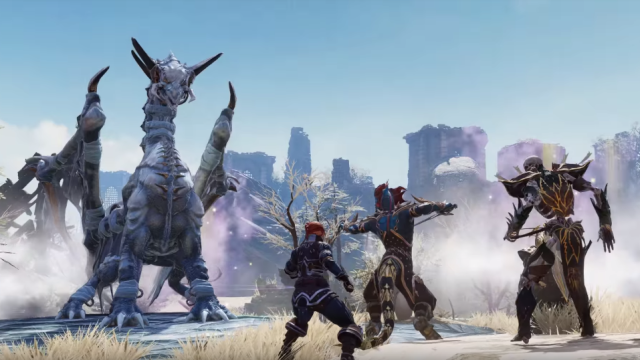
Comments
4 responses to “I Tried Remaking My D&D Adventure In Divinity: Original Sin 2, And It (Mostly) Worked”
Sounds like they’ve done a reasonable job. Key point to remember though is that mods will come to fill in the blanks and flesh out other areas. I’m sure models will be made at some point for animal skin armour.
Yeah, if Larian can stop breaking the mods every time they update the game.
If you’re willing to learn to use the actual toolset/scripting language there is nothing stopping you from creating something much, much closer to your original description. It’s a lot more work, though.
But the toolset is actually quite similar to NWN2’s Aurora 2 toolset, so as somebody who’s familiar with that, I’ve found it pretty quick to pick up.
The GM client is considerably better than NWN or NWN2’s ever were, though. It’s actually really a wonderful thing to me – I thought we’d never get another game that followed in NWN’s footsteps.
If Larian was so inclined it seems like it’d only be a small amount of work to make PWs possible in Divinity 2 (from a UI/feature perspective anyway – they’d also need to add a dedicated server client, which would probably be the most work). I dearly miss playing on my favourite PWs in NWN and would love a chance to have more experiences like that.
But as it stands, I can build my custom worlds and run games for my friends that live in different states in a much nicer engine than I used to be able to, and that’s really cool just by itself.
Me and a few friends spent a fair bit of time tinkering with the first NWN’s toolset. It was a little clunky, but once you got on a roll it wasn’t too bad. As there was nothing like it at the time though, it was a breath of fresh air just to be able to build out your fantasy game. Even if nobody played it…
City of Heroes ended up doing a surprisingly decent toolset as well.
I really miss NWN PWs. Used to play and write/GM (I never had the skills to do any of the actual building of areas). One of my hopes for Original Sin 2 is that PWs are possible.
Thanks for this! I was curious how well it could work for dnd! I have a question though–how does combat work? Are the D&D spells a part of the available skills dms can give to players? And given that the stats are different in more than just name (str, con, finesse, wits, and intelligence are all basically a 1 to 1 correlatuon with dnd, but memory and charisma are conpletely different), could someone actually play dnd on it? I imagine it would be possible to mod the gane to be a rwplica of dnd, but what was your experience? Did the fact that its a different gaming system change the player’s enjoyment?
Thanks!